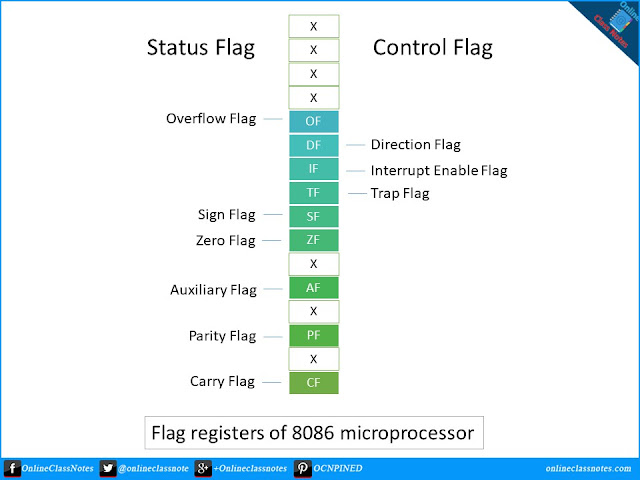Flag Registers of 8086 Processor:
There are 6 status flag registers and 4 control flag registers. Following are the 9 active flag registers of 8086 with their purposes.
Status Flag Registers:
1. Overflow Flag (OF):
Overflow Flag is set to 1 when there is a signed overflow. For example, when you add bytes 100 + 50 (result is not in range -128…127).
2. Sign Flag (SF):
Sign Flag is set to 1 when result is negative. When result is positive it is set to 0. This flag takes the value of the most significant bit.
3. Zero Flag (ZF):
Zero Flag (ZF) is set to 1 when result is zero. For non-zero result this flag is set to 0.
4. Auxiliary Flag (AF):
Auxiliary Flag is set to 1 when there is an unsigned overflow for low nibble (4 bits).
5. Parity Flag (PF):
Parity Flag is set to 1 when there is even number of one bits in result, and to 0 when there is odd number of one bits.
6. Carry Flag (CF);
Carry Flag is set to 1 when there is an unsigned overflow. For example when you add bytes 255 + 1 (result is not in range 0…255). When there is no overflow this flag is set to 0.
Control Flag Registers:
1. Direction Flag (DF):
Direction Flag is used by some instructions to process data chains, when this flag is set to 0 – the processing is done forward, when this flag is set to 1the processing is done backward.
2. Interrupt Enable Flag (IF):
When Interrupt Enable Flag is set to 1 CPU reacts to interrupts from external devices.
3. Trap Flag (TF):
Trap Flag is used for on-chip debugging.
Next Read:
